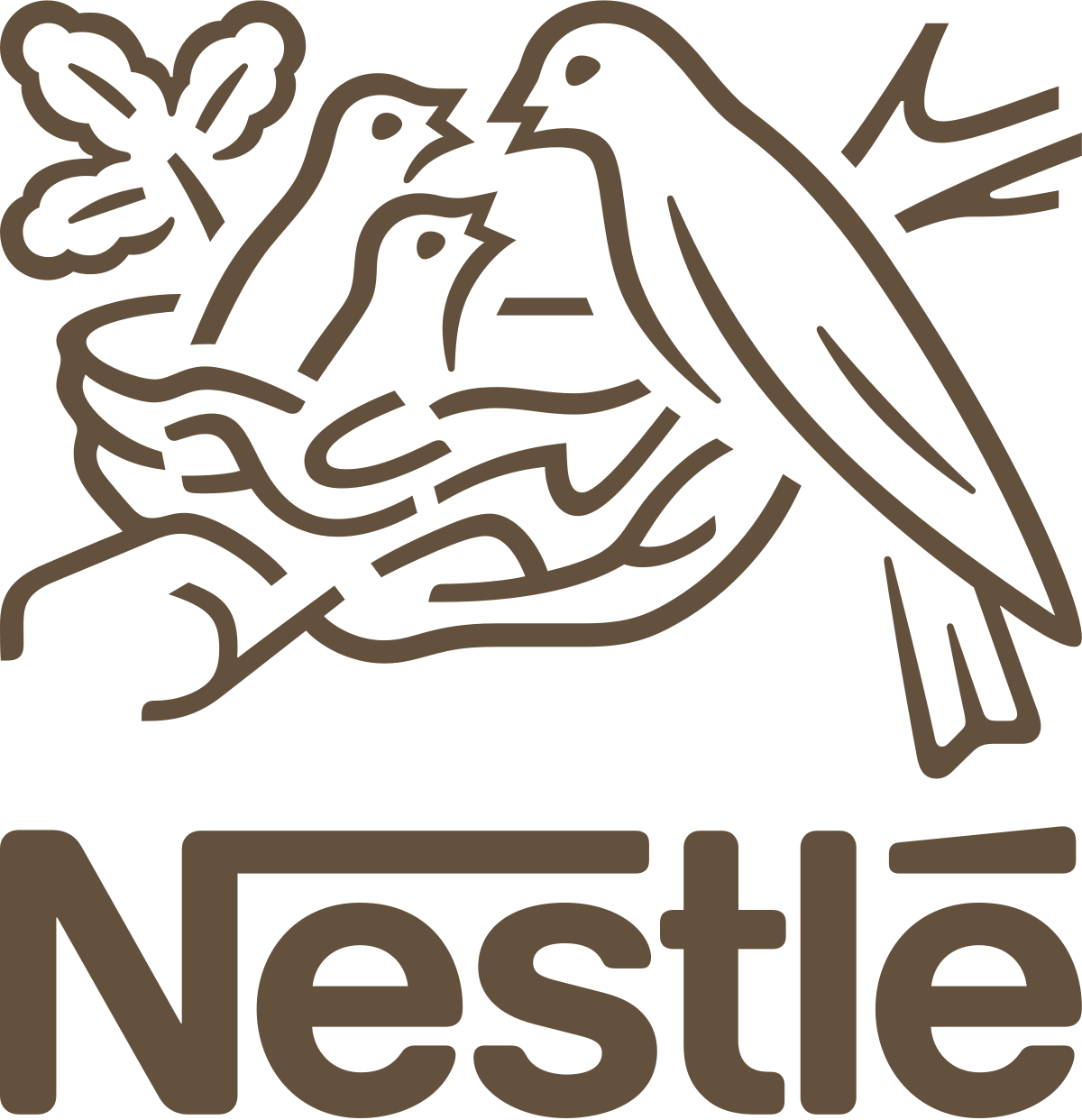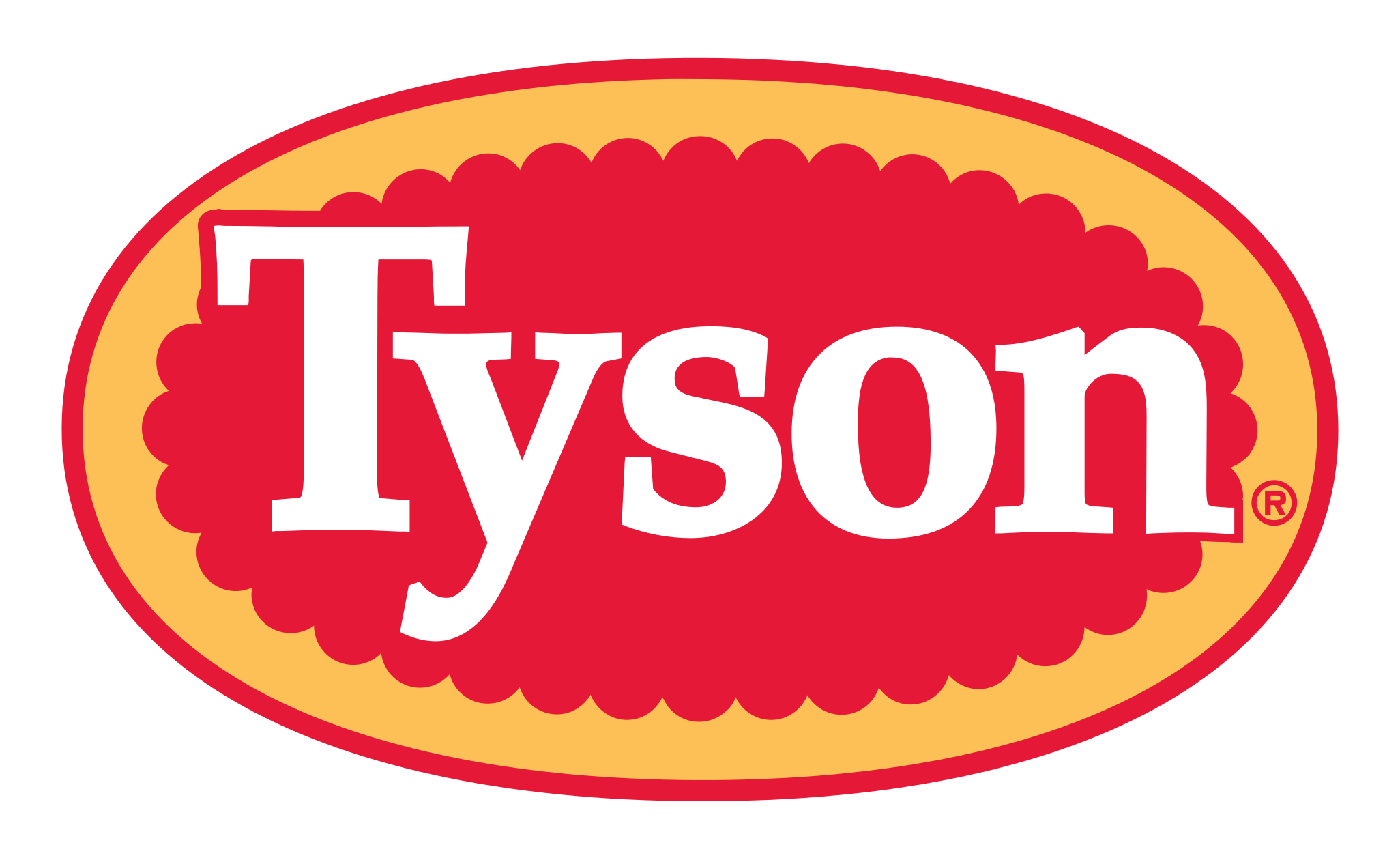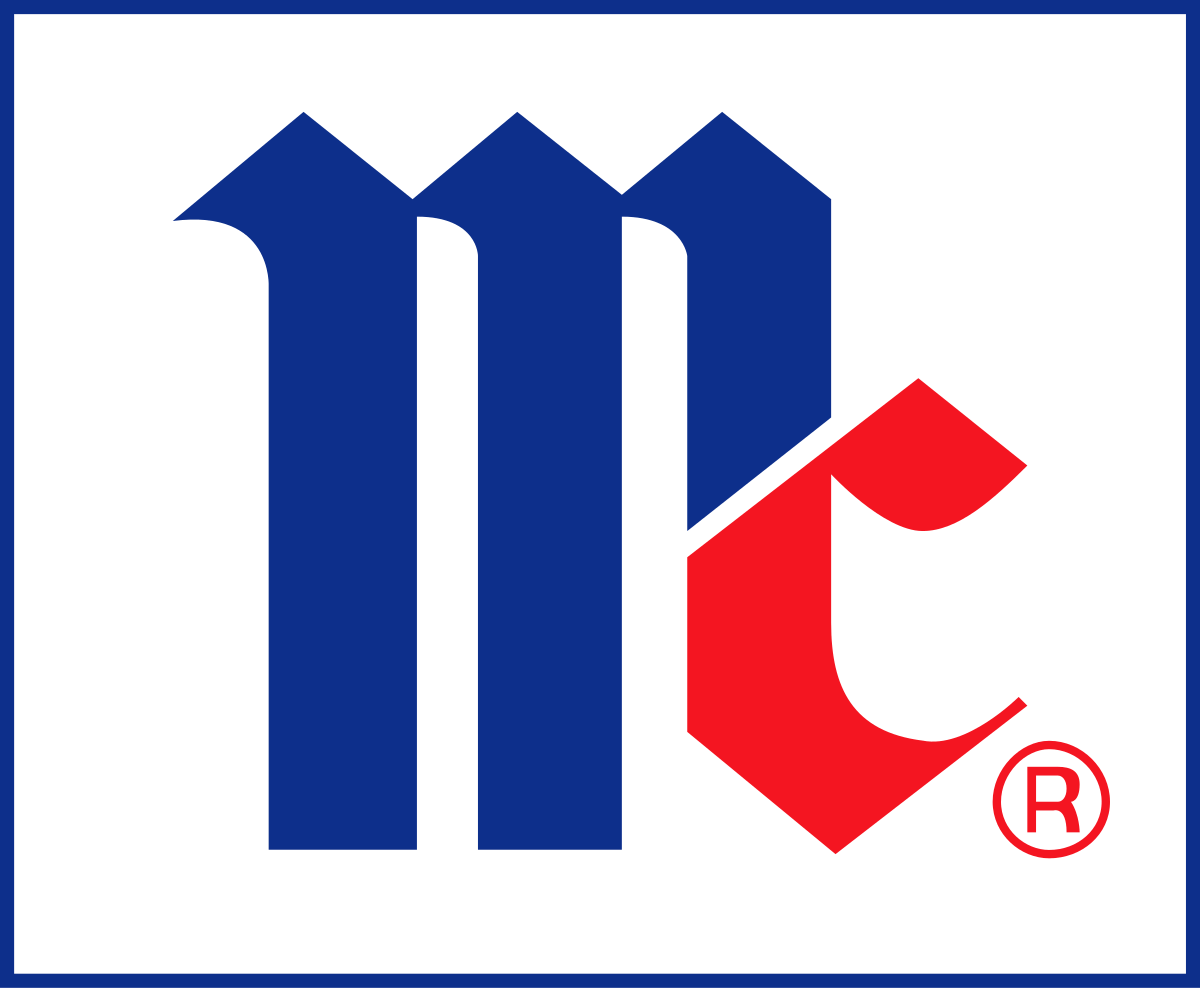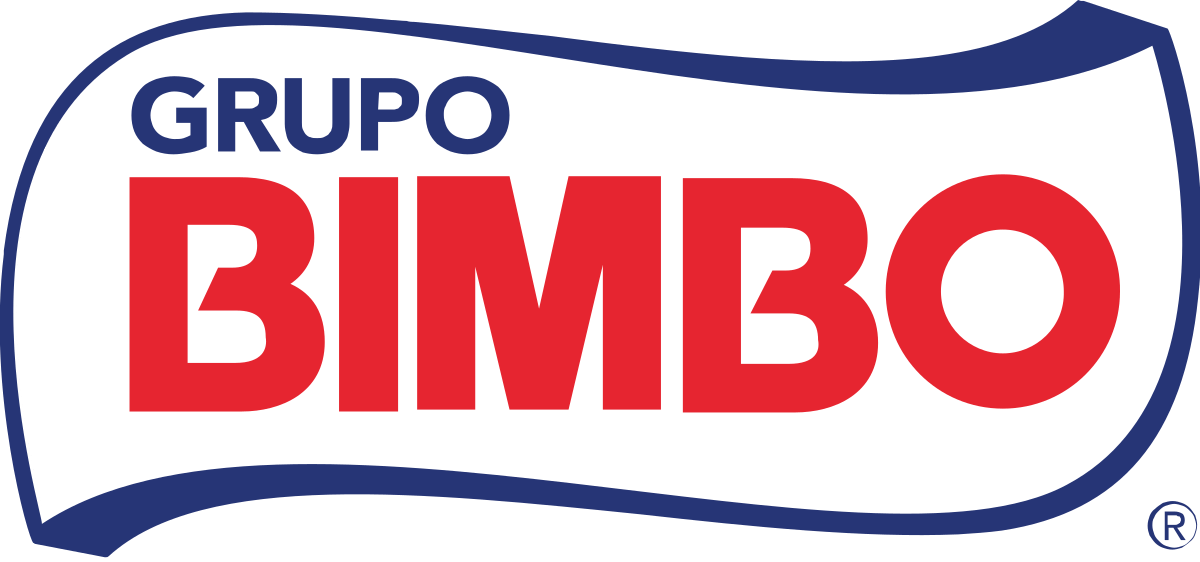Global Food Waste Management Market By Waste Type, By Service, By Source, By Region & Segmental Insights Trends and Forecast, 2024 – 2034
- Industry: Food & Beverages
- Report ID: TNR-110-1302
- Number of Pages: 420
- Table/Charts : Yes
- September, 2024
- Base Year : 2024
- No. of Companies : 10+
- No. of Countries : 29
- Views : 10067
- Covid Impact Covered: Yes
- War Impact Covered: Yes
- Formats : PDF, Excel, PPT
Food waste management refers to the process of efficiently reducing, recycling, and reusing food waste to minimize its impact on the environment. As global food waste continues to rise, effective management has become essential to address both economic and environmental challenges. Proper food waste management helps reduce greenhouse gas emissions, promotes sustainability, and supports energy generation through processes like anaerobic digestion, which converts waste into biogas.
Applications of food waste management include converting waste into animal feed, producing organic fertilizers, and generating renewable energy. For example, many companies are using food waste to create biofuels, while supermarkets and restaurants are partnering with organizations to donate surplus food. By embracing these solutions, businesses and governments aim to reduce the negative impact of food waste and contribute to a circular economy. In terms of revenue, the global food waste management market was worth US$ 70.5 Bn in 2023, anticipated to witness a CAGR of 6.1% during 2024 – 2034.

Global Food Waste Management Market Segmental Analysis:
Food Waste Management Market By Waste Type
In 2023, fruits and vegetables waste dominated the food waste type category, capturing a significant 19.2% revenue share. The perishability of these items, coupled with inefficient supply chains, leads to high levels of waste across households, retailers, and food service providers. For example, unsold produce in grocery stores or spoiled items during transportation contribute heavily to this waste. Companies and organizations are increasingly focused on managing this waste by turning it into compost or biofuel. Additionally, innovative solutions, such as partnerships with food banks and surplus redistribution platforms, help reduce the environmental impact of fruits and vegetables waste while promoting sustainability.
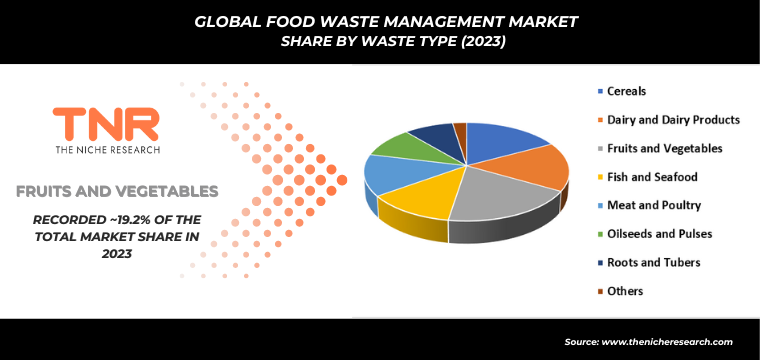
Food Waste Management Market By Service
Collection segment by service type emerged as the second largest in the food waste management market, capturing a 27.2% revenue share. This growth is driven by the need for efficient waste collection systems across households, businesses, and food service providers. For instance, cities and municipalities are implementing specialized collection services that focus on separating food waste for recycling or composting. Companies also offer tailored collection services for industries like restaurants and supermarkets to manage surplus waste effectively. These efforts help streamline the waste management process, reduce landfill dependency, and contribute to more sustainable practices.
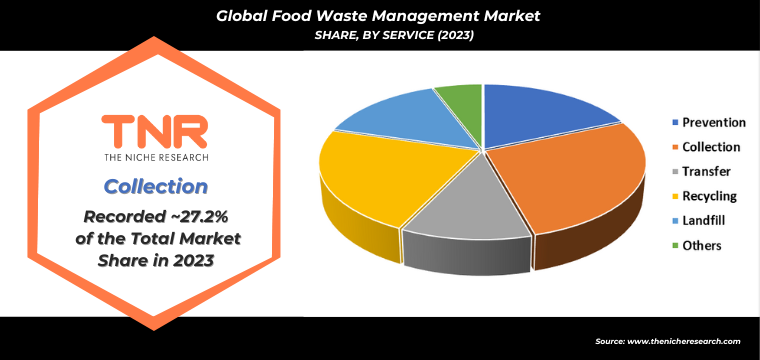
Food Waste Management Market By Source
Industrial segment led the market in 2023 with a revenue share of 61.2%. This dominance is due to the high volume of food waste generated by food processing units, manufacturing plants, and large-scale food production facilities. For example, food processing companies often deal with significant waste from raw materials, which can be recycled into animal feed or bioenergy. The industrial sector’s large-scale waste management systems, such as anaerobic digesters, help efficiently process food waste while reducing environmental impact and contributing to sustainable practices.
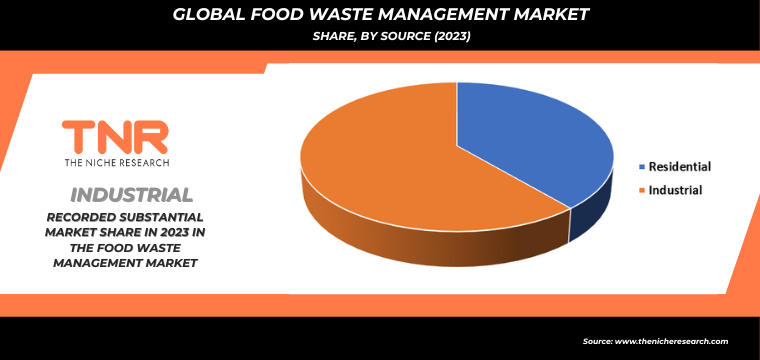
Food Waste Management Market By Region
Asia Pacific is expected to be the fastest-growing region in the food waste management market during the forecast period, driven by rapid urbanization, population growth, and increasing food production. Countries like China and India generate vast amounts of food waste due to their large populations and expanding food industries. For example, governments in these countries are implementing policies to improve waste management infrastructure and promote recycling initiatives. Additionally, the rise of industrial food processing in the region is pushing demand for advanced waste management technologies, further fueling market growth.
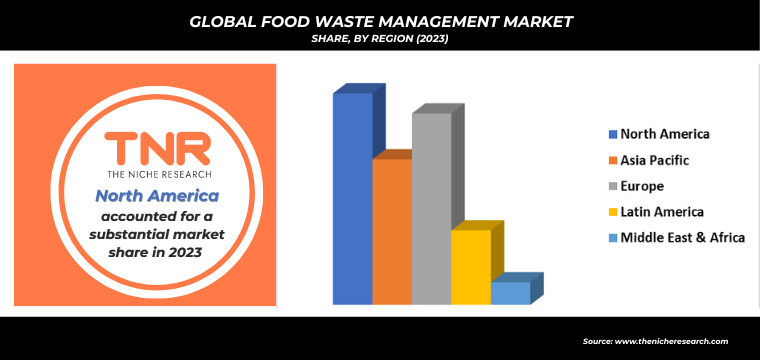
Percentage Of Food Waste Along The Food Supply Chain
Food waste occurs at various stages of the supply chain, with around 14% of global food production lost between post-harvest and retail. In developed regions, the majority of food waste is approximately 40% and occurs at the consumer level, due to over-purchasing and improper storage. Meanwhile, in developing regions, much of the waste happens during production, processing, and transportation, primarily due to inadequate infrastructure and inefficient supply chain management.
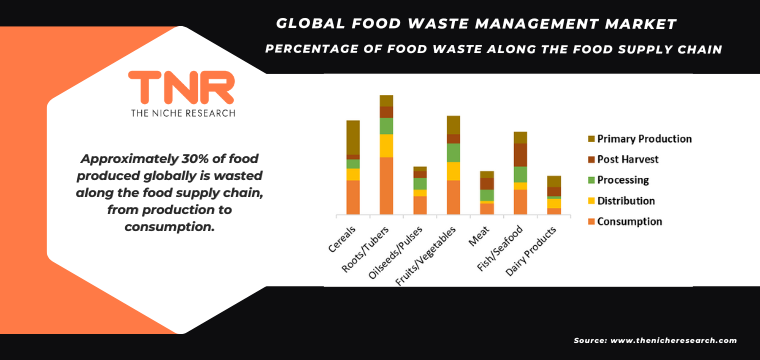
Global Food Waste Management Market Dynamics
Global Food Waste Management Market Growth Driver:
- Rising Environmental Concerns: Growing awareness of the environmental impact of food waste, including methane emissions from landfills, is driving governments and businesses to adopt sustainable waste management solutions, such as composting, recycling, and waste-to-energy technologies.
- Stringent Waste Regulations: Increasing governmental regulations worldwide aimed at reducing food waste, particularly in developed regions, are pushing businesses and industries to implement effective waste management systems, further boosting the demand for efficient collection, processing, and recycling services.
Global Food Waste Management Market Restraint:
- High Implementation Costs: The installation and maintenance of advanced food waste management technologies, such as anaerobic digesters and composting systems, involve significant initial investments, which can be a major barrier for small- and medium-sized businesses.
- Lack of Infrastructure: Inadequate waste management infrastructure in developing regions limits the efficient collection and processing of food waste, hindering the adoption of large-scale waste management solutions and slowing market growth in these areas.
Global Food Waste Management Market Opportunity:
- Growth of Circular Economy: The rising focus on circular economy models presents opportunities for businesses to convert food waste into valuable products like biofuels, fertilizers, and animal feed, driving innovation and profitability in the food waste management market.
- Technological Advancements: Emerging technologies like AI-driven waste tracking systems and smart collection solutions offer opportunities to improve efficiency in food waste management, enabling better monitoring, reduction, and recycling efforts across industries and households globally.
Global Food Waste Management Market Trends:
- Waste-to-Energy Solutions: The growing adoption of waste-to-energy technologies, such as anaerobic digestion and incineration, is a rising trend, as industries seek sustainable ways to convert food waste into renewable energy and reduce landfill dependency.
- Food Waste Reduction Initiatives: Increasing collaboration between governments, businesses, and non-profits to implement food waste reduction campaigns and technologies, such as surplus food redistribution platforms, is gaining momentum as consumers and industries prioritize sustainability and resource efficiency.
Food Lost and Waste in Europe
In Europe, food loss and waste are significant issues, with approximately 88 million tons wasted annually, impacting the environment and economy. Efforts are underway to address this through improved supply chain practices, consumer education, and regulatory measures aimed at reducing waste and promoting sustainability across the region.
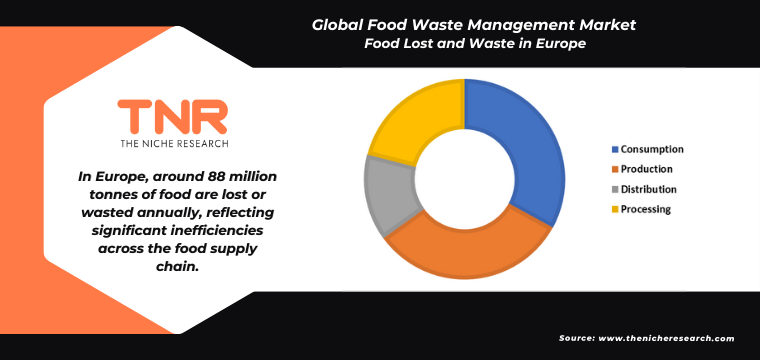
Key Developments:
- In December 2022, Myplan8 launched an application designed to educate users on their carbon footprint. The app helps individuals monitor the impact of their daily activities, travel routines, and food consumption on their overall carbon emissions.
- In August 2021, Clean Harbors collaborated with 3M, a prominent manufacturing company, in a groundbreaking partnership aimed at enhancing the efficiency and effectiveness of 3M’s waste management and handling operations.
Some of the players operating in the food waste management market are
- Advanced Disposal Services, Inc.
- Biffa
- Clean Harbors, Inc.
- Cleanaway
- Covanta Ltd.
- DS Smith
- FCC Recycling (UK) Limited
- Remondis SE & Co., KG
- Republic Services, Inc.
- Rumpke
- Stericycle, Inc.
- Suez
- Veolia
- Waste Management, Inc.
- Other Industry Participants
Global Food Waste Management Market Scope:
| Report Specifications | Details |
| Market Revenue in 2023 | US$ 70.5 Bn |
| Market Size Forecast by 2034 | US$ 135.3 Bn |
| Growth Rate (CAGR) | 6.1% |
| Historic Data | 2016 – 2022 |
| Base Year for Estimation | 2023 |
| Forecast Period | 2024 – 2034 |
| Report Inclusions | Market Size & Estimates, Market Dynamics, Competitive Scenario, Trends, Growth Factors, Market Determinants, Key Investment Segmentation, Product/Service/Solutions Benchmarking |
| Segments Covered | By Waste Type, By Service, By Source, By Region |
| Regions Covered | North America, Europe, Asia Pacific, Middle East & Africa, Latin America |
| Countries Covered | U.S., Canada, Mexico, Rest of North America, France, The UK, Spain, Germany, Italy, Nordic Countries (Denmark, Finland, Iceland, Sweden, Norway), Benelux Union (Belgium, The Netherlands, Luxembourg), Rest of Europe, China, Japan, India, New Zealand, Australia, South Korea, Southeast Asia (Indonesia, Thailand, Malaysia, Singapore, Rest of Southeast Asia), Rest of Asia Pacific, Saudi Arabia, UAE, Egypt, Kuwait, South Africa, Rest of Middle East & Africa, Brazil, Argentina, Rest of Latin America |
| Key Players | Advanced Disposal Services, Inc., Biffa, Clean Harbors, Inc., Cleanaway, Covanta Ltd., DS Smith, FCC Recycling (UK) Limited, Remondis SE & Co., KG, Republic Services, Inc., Rumpke, Stericycle, Inc., Suez, Veolia, Waste Management, Inc. |
| Customization Scope | Customization allows for the inclusion/modification of content pertaining to geographical regions, countries, and specific market segments. |
| Pricing & Procurement Options | Explore purchase options tailored to your specific research requirements |
| Contact Details | Consult With Our Expert
Japan (Toll-Free): +81 663-386-8111 South Korea (Toll-Free): +82-808- 703-126 Saudi Arabia (Toll-Free): +966 800-850-1643 United Kingdom: +44 753-710-5080 United States: +1 302-232-5106 E-mail: askanexpert@thenicheresearch.com
|
Global Food Waste Management Market
By Waste Type
- Cereals
- Dairy and Dairy Products
- Fruits and Vegetables
- Fish and Seafood
- Meat and Poultry
- Oilseeds and Pulses
- Roots and Tubers
- Others
By Service
- Prevention
- Collection
- Transfer
- Recycling
- Landfill
- Others
By Source
- Residential
- Industrial
By Region
- North America (U.S., Canada, Mexico, Rest of North America)
- Europe (France, The UK, Spain, Germany, Italy, Nordic Countries (Denmark, Finland, Iceland, Sweden, Norway), Benelux Union (Belgium, The Netherlands, Luxembourg), Rest of Europe)
- Asia Pacific (China, Japan, India, New Zealand, Australia, South Korea, Southeast Asia (Indonesia, Thailand, Malaysia, Singapore, Rest of Southeast Asia), Rest of Asia Pacific)
- Middle East & Africa (Saudi Arabia, UAE, Egypt, Kuwait, South Africa, Rest of Middle East & Africa)
- Latin America (Brazil, Argentina, Rest of Latin America)
Report Layout:
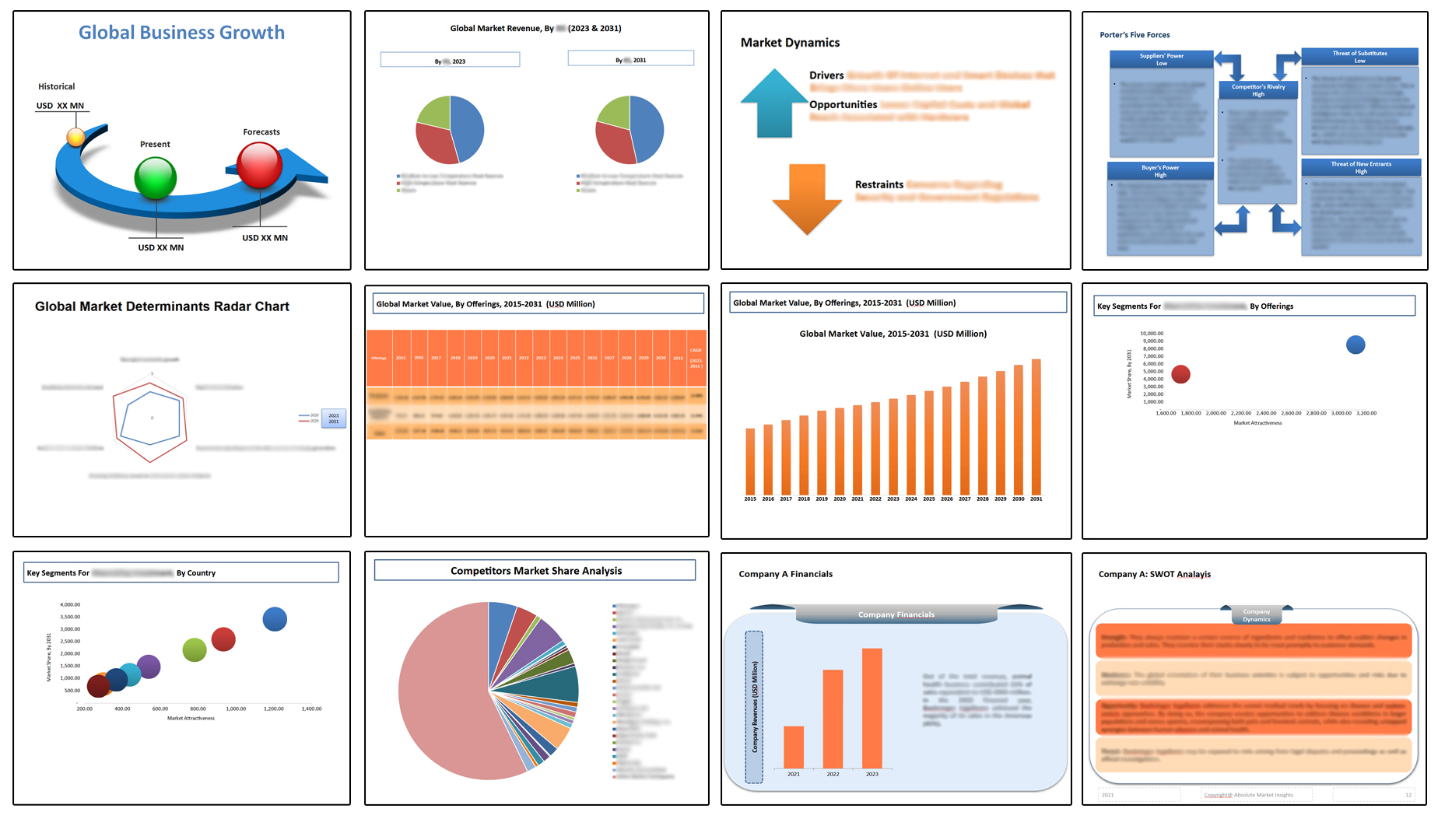
Table of Contents
Note: This ToC is tentative and can be changed according to the research study conducted during the course of report completion.
**Exclusive for Multi-User and Enterprise User.
Global Food Waste Management Market
By Waste Type
- Cereals
- Dairy and Dairy Products
- Fruits and Vegetables
- Fish and Seafood
- Meat and Poultry
- Oilseeds and Pulses
- Roots and Tubers
- Others
By Service
- Prevention
- Collection
- Transfer
- Recycling
- Landfill
- Others
By Source
- Residential
- Industrial
By Region
- North America (U.S., Canada, Mexico, Rest of North America)
- Europe (France, The UK, Spain, Germany, Italy, Nordic Countries (Denmark, Finland, Iceland, Sweden, Norway), Benelux Union (Belgium, The Netherlands, Luxembourg), Rest of Europe)
- Asia Pacific (China, Japan, India, New Zealand, Australia, South Korea, Southeast Asia (Indonesia, Thailand, Malaysia, Singapore, Rest of Southeast Asia), Rest of Asia Pacific)
- Middle East & Africa (Saudi Arabia, UAE, Egypt, Kuwait, South Africa, Rest of Middle East & Africa)
- Latin America (Brazil, Argentina, Rest of Latin America)
The Niche Research approach encompasses both primary and secondary research methods to provide comprehensive insights. While primary research is the cornerstone of our studies, we also incorporate secondary research sources such as company annual reports, premium industry databases, press releases, industry journals, and white papers.
Within our primary research, we actively engage with various industry stakeholders, conducting paid interviews and surveys. Our meticulous analysis extends to every market participant in major countries, allowing us to thoroughly examine their portfolios, calculate market shares, and segment revenues.
Our data collection primarily focuses on individual countries within our research scope, enabling us to estimate regional market sizes. Typically, we employ a bottom-up approach, meticulously tracking trends in different countries. We analyze growth drivers, constraints, technological innovations, and opportunities for each country, ultimately arriving at regional figures.Our process begins by examining the growth prospects of each country. Building upon these insights, we project growth and trends for the entire region. Finally, we utilize our proprietary model to refine estimations and forecasts.
Our data validation standards are integral to ensuring the reliability and accuracy of our research findings. Here’s a breakdown of our data validation processes and the stakeholders we engage with during our primary research:
- Supply Side Analysis: We initiate a supply side analysis by directly contacting market participants, through telephonic interviews and questionnaires containing both open-ended and close-ended questions. We gather information on their portfolios, segment revenues, developments, and growth strategies.
- Demand Side Analysis: To gain insights into adoption trends and consumer preferences, we reach out to target customers and users (non-vendors). This information forms a vital part of the qualitative analysis section of our reports, covering market dynamics, adoption trends, consumer behavior, spending patterns, and other related aspects.
- Consultant Insights: We tap into the expertise of our partner consultants from around the world to obtain their unique viewpoints and perspectives. Their insights contribute to a well-rounded understanding of the markets under investigation.
- In-House Validation: To ensure data accuracy and reliability, we conduct cross-validation of data points and information through our in-house team of consultants and utilize advanced data modeling tools for thorough verification.
The forecasts we provide are based on a comprehensive assessment of various factors, including:
- Market Trends and Past Performance (Last Five Years): We accurately analyze market trends and performance data from preceding five years to identify historical patterns and understand the market’s evolution.
- Historical Performance and Growth of Market Participants: We assess the historical performance and growth trajectories of key market participants. This analysis provides insights into the competitive landscape and individual company strategies.
- Market Determinants Impact Analysis (Next Eight Years): We conduct a rigorous analysis of the factors that are projected to influence the market over the next eight years. This includes assessing both internal and external determinants that can shape market dynamics.
- Drivers and Challenges for the Forecast Period:Identify the factors expected to drive market growth during the forecast period, as well as the challenges that the industry may face. This analysis aids in deriving an accurate growth rate projection.
- New Acquisitions, Collaborations, or Partnerships: We keep a close watch on any new acquisitions, collaborations, or partnerships within the industry. These developments can have a significant impact on market dynamics and competitiveness.
- Macro and Micro Factors Analysis:A thorough examination of both macro-level factors (e.g., economic trends, regulatory changes) and micro-level factors (e.g., technological advancements, consumer preferences) that may influence the market during the forecast period.
- End-User Sentiment Analysis: To understand the market from the end-user perspective, we conduct sentiment analysis. This involves assessing the sentiment, preferences, and feedback of the end-users, which can provide valuable insights into market trends.
- Perspective of Primary Participants: Insights gathered directly from primary research participants play a crucial role in shaping our forecasts. Their perspectives and experiences provide valuable qualitative data.
- Year-on-Year Growth Trend: We utilize a year-on-year growth trend based on historical market growth and expected future trends. This helps in formulating our growth projections, aligning them with the market’s historical performance.
Research process adopted by TNR involves multiple stages, including data collection, validation, quality checks, and presentation. It’s crucial that the data and information we provide add value to your existing market understanding and expertise. We have also established partnerships with business consulting, research, and survey organizations across regions and globally to collaborate on regional analysis and data validation, ensuring the highest level of accuracy and reliability in our reports.
